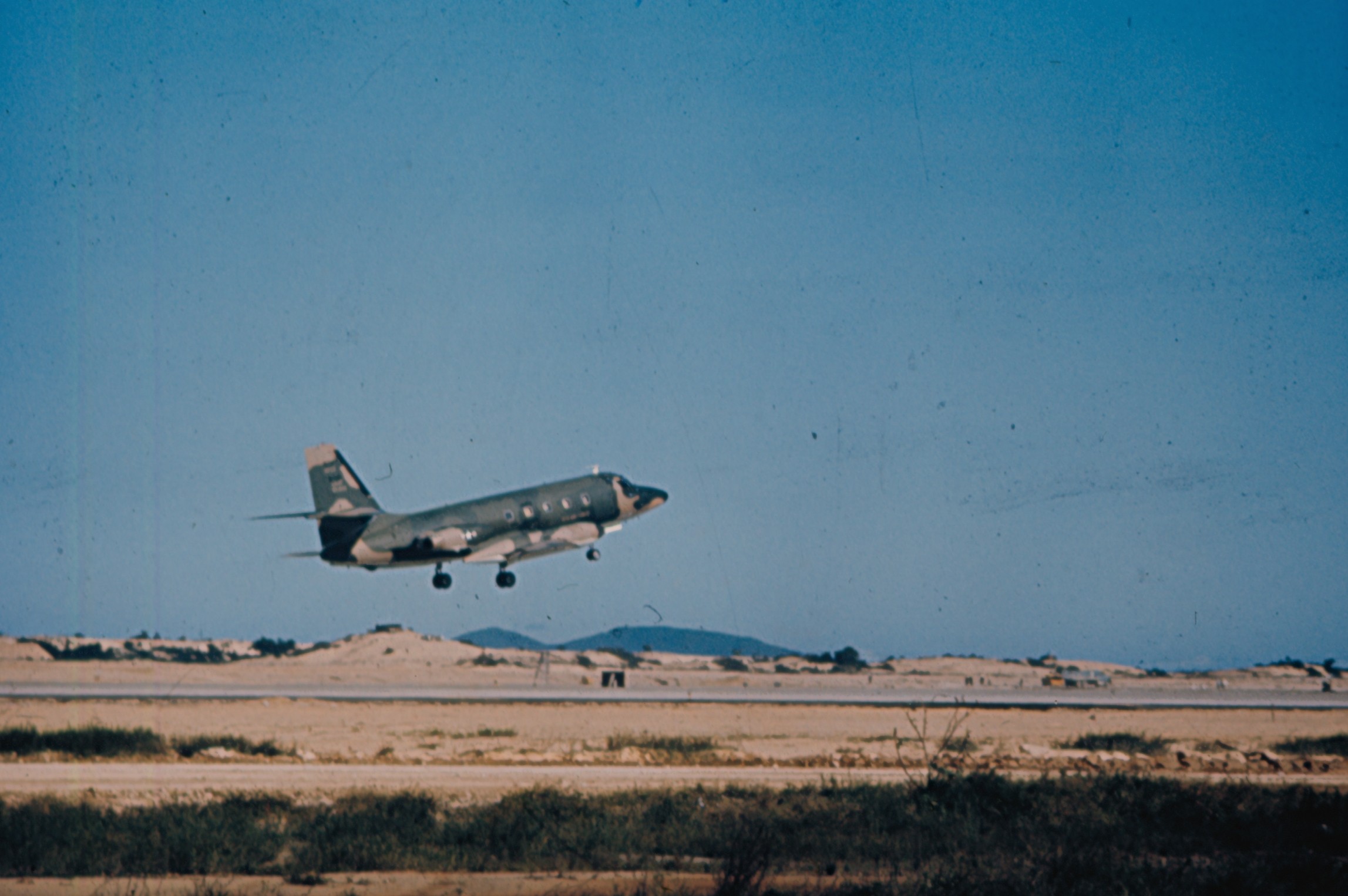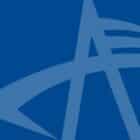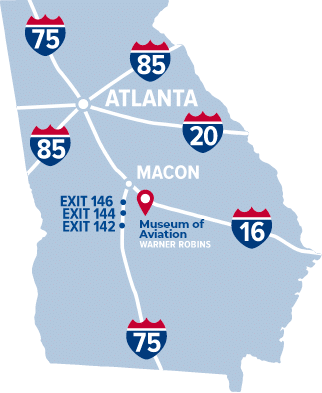People sometimes ask me to name my favorite airplane. My answer is usually the one I’m learning the most about at the time. What that means is my favorite airplane tends to change. Right now, it’s the Lockheed C-140 JetStar. I think the JetStar is an interesting and attractive airplane with a fascinating history.
Business jets are common today but the JetStar was the first jet designed and built specifically as an executive and VIP (“Very Important Person”) transport. It captured the fancy and imagination of many during the 1960s. George Haddaway, a pilot and publisher of Flight Magazine said, “This plane makes me want to be 19 again and just starting to fly.” Robert Fowler, editor of the Cobb County Times in Marietta, Georgia, said, “A flight in the JetStar is an experience one must have if he is to realize fully what is in store for this Jet Age.”1
The prototype Jetstar flew for the first time on September 4, 1957. The JetStar’s engines were mounted on the rear fuselage in what was then an unconventional design. The two prototypes were built in Burbank,California, and had two engines. Production JetStars were built here in Georgia at the Lockheed plant in Marietta and had four engines. Lockheed-Georgia built just over 200 JetStars.

Front view of a JetStar in flight. Distinctive features include the four engines mounted on the rear fuselage, two per side, and the “slipper tanks” on the wings that carried fuel.
The JetStar had a top speed of about 600 miles per hour, though it cruised most efficiently around 500 miles per hour. It had a range of over 2,200 miles and could seat 10 passengers. In 1962, the legendary pilot Jacqueline Cochran set numerous aviation records while flying a Jetstar from New Orleans, Louisiana, to Bonn, West Germany.
The United States Air Force (USAF) bought sixteen C-140 JetStars. The Warner Robins Air Materiel Area at Robins Air Force Base (AFB), Georgia, had worldwide logistical management responsibilities for the JetStar throughout its service life.
The Air Force Communications Service (AFCS) used five C-140As equipped with electronic gear to check the accuracy and reliability of navigational aids and air traffic control systems at U.S. military installations around the world. The JetStar was able to duplicate the flight patterns of high-performance military aircraft and served in this role for decades. In late 1962, three C-140As were assigned to the 1852nd Facility Checking Flight at Robins AFB, with more scheduled for delivery at the beginning of 1963.2

An Air Force Communications Service C-140A JetStar in flight in the early 1960s. What a cool paint scheme!
On November 7, 1962, a C-140A crashed while landing at Robins AFB. The aircraft burst into flames and five men, all residents of Warner Robins, died: Major Lee M. Tappan, Captain Earl B. Butler, Captain Joseph Q. Spell, Captain Thomas L. Edmondson, and Technical Sergeant Billie E. Garrison. The sole survivor was Captain Dendy Lewis, who managed to get out of a cockpit window and was then dragged to safety by a young Airman from Albany, Georgia, named Thomas J. Brice.3 Lewis suffered severe burns but recovered and returned to flying. In 1966, he landed a JetStar on the aluminum mat runway at Chu Lai Air Base,South Vietnam, to pick up a ground crewman who was under fire.4

JetStars wore a camouflage paint scheme for operations in Southeast Asia during the Vietnam War. This C-140A is taking off from Tan Son Nhut Air Base in South Vietnam.
Eleven C-140Bs were assigned to the Military Airlift Command. Six were flown as VC-140Bs on special government and White House airlift missions by the 89th Military Airlift Wing at Andrews AFB, Maryland. The Museum of Aviation’s JetStar, serial number 61-2488, entered service in October 1961 and was the first VC-140B delivered to the USAF.
Lyndon B. Johnson (“LBJ”) liked the JetStar and used it often as both vice president and president, primarily to fly to his ranch in Texas but also for other trips. Whenever the President was on board, it flew under the call sign “Air Force One.” We have documentation of LBJ flying on 61-2488 numerous times from 1964-1968. President Gerald R. Ford also flew on 2488 at least once. I’d love to find records showing that other presidents flew on this airplane. We’re told that 2488 was used by many high-ranking government officials, including Secretary of State Henry Kissinger.

President Johnson (at right, looking out the window) aboard the museum’s JetStar on June 3, 1966 enroute to his ranch. (LBJ Library/photo by Yoichi Okamoto.)

Aerial view of JetStar 61-2488 on June 24, 1967 at President Johnson’s ranch in central Texas, about 50 miles west of Austin. (LBJ Library photo.)
The C-140 was capable and versatile, but by the early 1980s the Air Force was looking for a replacement. JetStars were out of production and spares were getting expensive. The JetStar was also not as fuel efficient as newer designs. 61-2488 was retired in 1984 after accumulating over 11,500 hours of flight time. It was flown to Robins AFB for preservation at the Museum of Aviation in 1985 and is currently on display in the Scott Exhibit Hangar. It is the only C-140 JetStar on display in the Southeast. And it’s my favorite airplane—for now.
Mike Rowland, Curator
Notes:
1. Lockheed Aircraft Corporation. What it’s Like to Fly in the JetStar: Writers and Newscasters from Coast to Coast Give Reactions to Flights in New Jet Utility Plane. Marietta: Lockheed-Georgia Division, News Bureau, n.d. Print.
2. United States Air Force. C-140 Crashes at Robins, Five Killed, One Injured. Robins Air Force Base: Warner Robins Air Materiel Area, Office of Information, 8 November 1962. Print.
3. Ibid.
4. United States Air Force. Whatever Happened to Captain Dendy Lewis? Robins Air Force Base: Warner Robins Air Materiel Area, Office of Information, 2 November 1966. Print.














